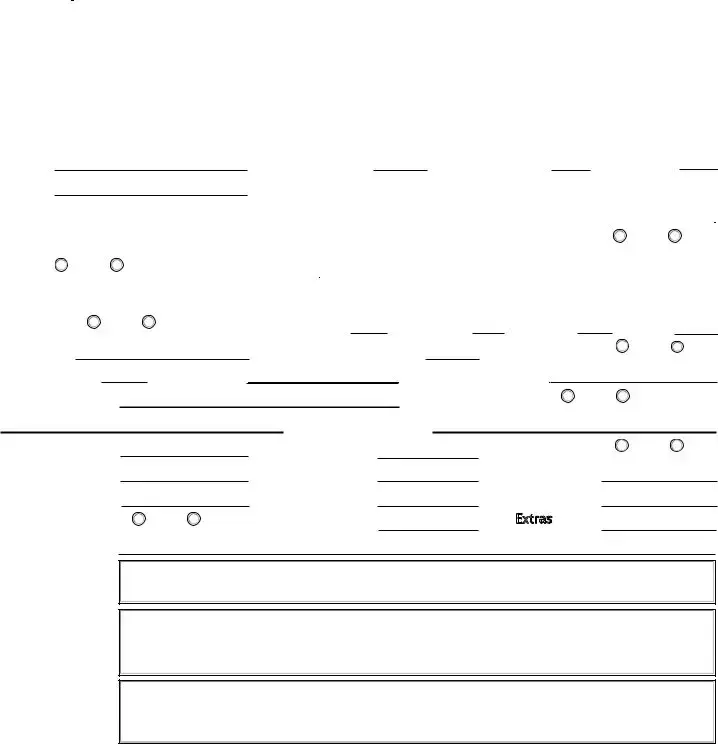|
|
Homeowners Insurance Quote Form |
|
Insurance Center of Buffalo |
|
|
|
|
|
|
|
|
|
|
|
|
|
|
|
|
|
|
|
Personal Information: |
|
|
|
|
|
|
|
|
|
|
|
|
|
|
|
|
|
|
|
|
|
|
|
|
|
|
|
|
1st Named Insured |
|
|
Date of Birth: |
|
|
|
|
SSN: |
|
|
|
|
|
|
|
|
|
|
|
|
|
|
|
|
|
|
|
|
|
|
|
|
|
|
|
|
|
|
|
|
|
|
|
|
Home Phone: |
|
|
Cell Phone: |
|
|
|
|
Email: |
|
|
|
|
|
|
|
|
|
|
|
|
|
|
|
|
|
|
|
|
|
|
|
|
|
|
|
|
|
|
|
|
|
|
|
|
|
|
2nd Named Insured: |
|
|
|
Date of Birth: |
|
|
|
|
SSN: |
|
|
|
|
|
|
|
|
|
|
|
|
|
|
|
|
|
|
|
|
|
Home Phone: |
|
|
|
Cell Phone: |
|
|
|
|
Email: |
|
|
|
|
|
|
|
|
|
|
|
|
|
|
|
|
|
|
|
|
|
Mailing Address: |
|
|
Township: |
|
|
|
|
County: |
|
|
|
|
|
|
|
|
|
|
|
|
|
|
|
|
|
|
|
|
|
|
|
|
|
|
|
|
|
|
|
|
|
|
|
|
|
|
|
|
|
|
|
|
|
|
|
|
|
|
City/State |
|
|
|
|
Zip Code: |
|
|
|
|
|
|
|
|
|
|
|
|
|
|
|
|
|
|
|
|
|
|
|
|
|
|
|
|
|
|
|
|
|
|
Current Insurance Information:
Current Deductible: |
|
Liability Limit: |
|
|
|
|
|
|
|
|
|
|
|
|
|
|
|
|
Current Insurance Carrier: |
|
|
Current Dwelling Amount: |
|
|
|
|
|
|
|
|
|
|
|
|
|
|
|
|
|
Policy Start Date |
|
|
Known Losses (past 5 years): |
|
|
|
|
|
|
|
|
|
|
|
|
|
|
|
|
|
|
Home & Property Information:
Physical Address:  Year Constructed:
Year Constructed:  # Living in Home:
# Living in Home:  # OF FAMILIES:
# OF FAMILIES: 
Miles from Fire Dept. |
|
|
|
|
|
|
|
Responding Fire Dept. |
|
|
|
|
|
|
|
|
|
|
|
|
|
|
|
|
|
|
|
|
|
|
|
|
|
|
|
|
|
|
|
Fire Hydrant Near: |
|
|
|
|
|
|
|
|
|
|
|
|
Inside City Limits? |
YES |
NO |
|
|
|
|
|
|
|
|
|
|
|
|
|
|
|
|
|
|
|
|
|
|
|
|
|
|
|
|
|
|
|
Wood Stove: |
YES |
NO Fireplace: |
|
|
|
Age of Roof (Years): |
|
|
|
Roof Type: |
|
|
|
|
|
|
|
|
|
|
|
|
|
|
|
|
|
|
|
|
|
|
|
|
|
|
|
|
|
|
|
|
|
|
|
|
Above Ground Sq. Footage: |
|
|
House Style: |
|
|
% of Basement Finished: |
|
|
|
|
|
|
|
|
|
|
|
|
|
|
|
|
|
|
|
|
|
|
Walkout Basement: |
YES |
NO Age of Plumbing (Years): |
# Full Bath: |
# ¾ Bath: |
|
# ½ Bath: |
|
Heat Source & Type: |
|
|
|
Age of Heat Source (Years): |
A/C Central Air: |
|
YES |
NO |
Age of Electrical (Years): |
|
Kitchen Type: |
|
Specialized Doors: |
|
|
|
Other Special Features: |
|
|
|
|
Business Usage: |
YES |
NO |
|
Garage: |
|
|
|
Garage Size: |
|
|
|
|
|
Attached Structures: |
|
|
|
Size of Structure: |
|
Security System: |
YES |
NO |
Attached Structures: |
|
|
|
Size of Structure: |
|
Total Acreage: |
|
|
|
Other Attached Structures: |
|
|
|
Size of Structure: |
|
Trampoline: |
|
|
|
Swimming Pool: |
|
YES |
NO |
Pool Type: |
|
Pool ([WUDV: |
|
|
|
Pets (LIST BREED) |
|
|
|
|
|
|
|
|
|
Outbuildings? |
|
|
|
|
|
|
|
|
|
If yes, please enter type, size, and value for each:
High Value Items?
Please enter all details for any
Collectibles, Art, Jewelry, Guns,
ATVs, Snowmobiles, Boats, Etc.:
Any Additional Comments:
PHONE: |
763-682-4890 |
EMAIL: |
INFO@INSURANCECENTEROFBUFFALO.COM |
FAX: |
763-684-5278 |
ADDRESS: |
PO BOX 458, BUFFALO MN 55313 |


 Year Constructed:
Year Constructed:  # Living in Home:
# Living in Home: 
